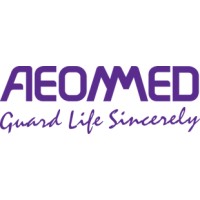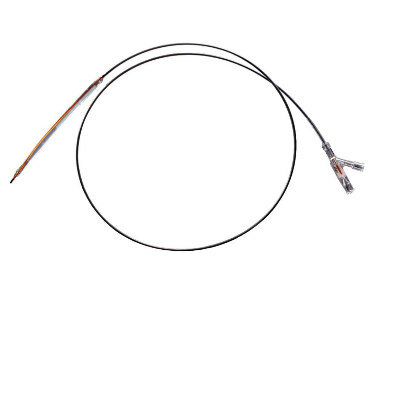Needle Fasciotomy Recommended for Treating Viking Disease
|
By HospiMedica International staff writers Posted on 26 Jun 2018 |

Image: An example of Dupuytren\'s contracture on the ring finger (Photo courtesy of Wikipedia).
A new study shows that needle release is just as effective as pharmaceutical treatment for treating Dupuytren's contracture, a pathological collagen disease that causes crooked fingers.
Researchers at the Sahlgrenska Academy (SA; Göteborg, Sweden) conducted a randomized, single-blinded controlled study that enrolled 156 patients with a Dupuytren contracture of at least 20° in the metacarpophalangeal (MCP) joint in a single finger. The patients were randomized to either percutaneous needle fasciotomy (PNF), or to treatment with injectable Clostridium Histolyticum collagenase (CCH). A single surgeon administered all treatments, and all the patients were seen after one week and blinded to further follow-up.
In addition to the procedure itself, 39 of the patients were examined by ultrasound both before and after treatment in order to compare the morphological appearance of the cord rupture. The patients were assessed after six months, one year, and two years by a single physiotherapist who was blinded to the treatment each patient had received. Outcome measures included measurements (joint motion, recurrence, or prevalence of a Dupuytren cord), and patient reported outcome measures.
The results revealed that patients treated by CCH had significantly more pain and larger skin ruptures than the patients treated by PNF, but there were no other significant outcome differences between the two methods one year after treatment. After two years, 76% of patients treated by CCH and 79% of those treated by PNF still had a straight MCP joint in the treated finger; in over 50% of the patients, no cords were detectable after two years. The study was presented as a doctoral thesis on May 10, 2018.
“In my opinion, there has been excessive faith in the ability of this drug [CCH] to break down the cord better than surgery, while in many places alternative solutions have been forgotten or never even considered,” said lead author and dissertation presenter Joakim Stromberg, MD, PhD. “The needle release is not at all as troublesome for patients. This extremely simple method does not produce as much pain afterwards, nor does it require any specific rehabilitation.”
Dupuytren's contracture, often referred to as "Viking disease," is a common ailment that affects about 10% of men and two percent of women in the Nordic countries. In this condition, a cord consisting of pathological connective tissue forms on the palmar side of the finger, which over time can prevent the finger from being straightened. The pinky and ring fingers are most commonly affected, often in both hands. The disease is most common among individuals older than 60, and has also been linked to factors such as heredity and diabetes. It often recurs and needs to be treated again.
Related Links:
Sahlgrenska Academy
Researchers at the Sahlgrenska Academy (SA; Göteborg, Sweden) conducted a randomized, single-blinded controlled study that enrolled 156 patients with a Dupuytren contracture of at least 20° in the metacarpophalangeal (MCP) joint in a single finger. The patients were randomized to either percutaneous needle fasciotomy (PNF), or to treatment with injectable Clostridium Histolyticum collagenase (CCH). A single surgeon administered all treatments, and all the patients were seen after one week and blinded to further follow-up.
In addition to the procedure itself, 39 of the patients were examined by ultrasound both before and after treatment in order to compare the morphological appearance of the cord rupture. The patients were assessed after six months, one year, and two years by a single physiotherapist who was blinded to the treatment each patient had received. Outcome measures included measurements (joint motion, recurrence, or prevalence of a Dupuytren cord), and patient reported outcome measures.
The results revealed that patients treated by CCH had significantly more pain and larger skin ruptures than the patients treated by PNF, but there were no other significant outcome differences between the two methods one year after treatment. After two years, 76% of patients treated by CCH and 79% of those treated by PNF still had a straight MCP joint in the treated finger; in over 50% of the patients, no cords were detectable after two years. The study was presented as a doctoral thesis on May 10, 2018.
“In my opinion, there has been excessive faith in the ability of this drug [CCH] to break down the cord better than surgery, while in many places alternative solutions have been forgotten or never even considered,” said lead author and dissertation presenter Joakim Stromberg, MD, PhD. “The needle release is not at all as troublesome for patients. This extremely simple method does not produce as much pain afterwards, nor does it require any specific rehabilitation.”
Dupuytren's contracture, often referred to as "Viking disease," is a common ailment that affects about 10% of men and two percent of women in the Nordic countries. In this condition, a cord consisting of pathological connective tissue forms on the palmar side of the finger, which over time can prevent the finger from being straightened. The pinky and ring fingers are most commonly affected, often in both hands. The disease is most common among individuals older than 60, and has also been linked to factors such as heredity and diabetes. It often recurs and needs to be treated again.
Related Links:
Sahlgrenska Academy
Latest Surgical Techniques News
- Robotic Assistant Delivers Ultra-Precision Injections with Rapid Setup Times
- Minimally Invasive Endoscopic Surgery Improves Severe Stroke Outcomes
- Novel Glue Prevents Complications After Breast Cancer Surgery
- Breakthrough Brain Implant Enables Safer and More Precise Drug Delivery
- Bioadhesive Sponge Stops Uncontrolled Internal Bleeding During Surgery
- Revolutionary Nano Bone Material to Accelerate Surgery and Healing
- Superior Orthopedic Implants Combat Infections and Quicken Healing After Surgery
- Laser-Based Technique Eliminates Pancreatic Tumors While Protecting Healthy Tissue
- Surgical Treatment of Severe Carotid Artery Stenosis Benefits Blood-Brain Barrier
- Revolutionary Reusable Duodenoscope Introduces 68-Minute Sterilization
- World's First Transcatheter Smart Implant Monitors and Treats Congestion in Heart Failure
- Hybrid Endoscope Marks Breakthrough in Surgical Visualization
- Robot-Assisted Bronchoscope Diagnoses Tiniest and Hardest to Reach Lung Tumors
- Diamond-Titanium Device Paves Way for Smart Implants that Warn of Disease Progression
- 3D Printable Bio-Active Glass Could Serve as Bone Replacement Material
- Spider-Inspired Magnetic Soft Robots to Perform Minimally Invasive GI Tract Procedures
Channels
Critical Care
view channel
Light-Based Technology to Measure Brain Blood Flow Could Diagnose Stroke and TBI
Monitoring blood flow in the brain is crucial for diagnosing and treating neurological conditions such as stroke, traumatic brain injury (TBI), and vascular dementia. However, current imaging methods like... Read more
AI Heart Attack Risk Assessment Tool Outperforms Existing Methods
For decades, doctors have relied on standardized scoring systems to assess patients with the most common type of heart attack—non-ST-elevation acute coronary syndrome (NSTE-ACS). The GRACE score, used... Read morePatient Care
view channel
Revolutionary Automatic IV-Line Flushing Device to Enhance Infusion Care
More than 80% of in-hospital patients receive intravenous (IV) therapy. Every dose of IV medicine delivered in a small volume (<250 mL) infusion bag should be followed by subsequent flushing to ensure... Read more
VR Training Tool Combats Contamination of Portable Medical Equipment
Healthcare-associated infections (HAIs) impact one in every 31 patients, cause nearly 100,000 deaths each year, and cost USD 28.4 billion in direct medical expenses. Notably, up to 75% of these infections... Read more
Portable Biosensor Platform to Reduce Hospital-Acquired Infections
Approximately 4 million patients in the European Union acquire healthcare-associated infections (HAIs) or nosocomial infections each year, with around 37,000 deaths directly resulting from these infections,... Read moreFirst-Of-Its-Kind Portable Germicidal Light Technology Disinfects High-Touch Clinical Surfaces in Seconds
Reducing healthcare-acquired infections (HAIs) remains a pressing issue within global healthcare systems. In the United States alone, 1.7 million patients contract HAIs annually, leading to approximately... Read moreHealth IT
view channel
Printable Molecule-Selective Nanoparticles Enable Mass Production of Wearable Biosensors
The future of medicine is likely to focus on the personalization of healthcare—understanding exactly what an individual requires and delivering the appropriate combination of nutrients, metabolites, and... Read moreBusiness
view channel
Philips and Masimo Partner to Advance Patient Monitoring Measurement Technologies
Royal Philips (Amsterdam, Netherlands) and Masimo (Irvine, California, USA) have renewed their multi-year strategic collaboration, combining Philips’ expertise in patient monitoring with Masimo’s noninvasive... Read more
B. Braun Acquires Digital Microsurgery Company True Digital Surgery
The high-end microsurgery market in neurosurgery, spine, and ENT is undergoing a significant transformation. Traditional analog microscopes are giving way to digital exoscopes, which provide improved visualization,... Read more
CMEF 2025 to Promote Holistic and High-Quality Development of Medical and Health Industry
The 92nd China International Medical Equipment Fair (CMEF 2025) Autumn Exhibition is scheduled to be held from September 26 to 29 at the China Import and Export Fair Complex (Canton Fair Complex) in Guangzhou.... Read more














